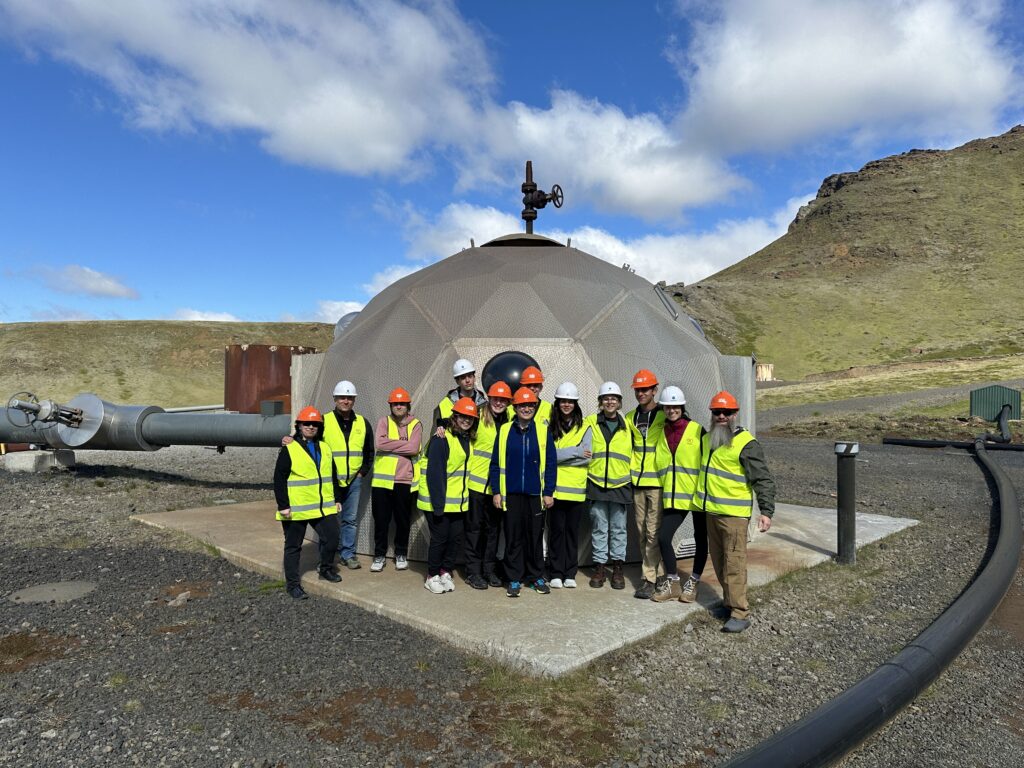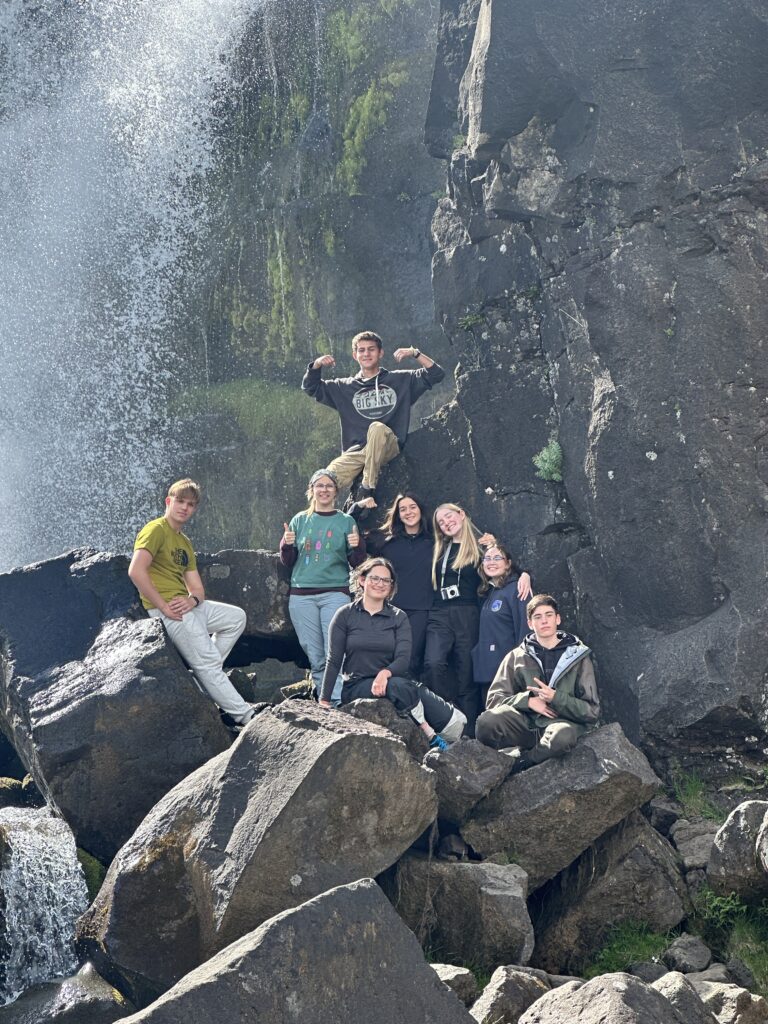This post features writing by Smithsonian student Vaclav!
Our group leader of the day for 28 June was yours truly: Vaclav V.
First, let’s briefly go over the day’s schedule:
- Wake up call at 7:30, and preparation for the day
- Breakfast from 8:00 to 9:00
- We left at around 9:00 and departed towards the Hellisheiði Power Station
- Upon leaving the plant, we went towards Strokkour and Geysir along the famous Golden Circle
- After viewing the geysers, we traveled to Gullfoss, one of the most photographed waterfalls on the planet
- We then traveled to Öxarárfoss waterfall in the Þingvellir National Park
- We finished out our day with a meal at Íslenski Barinn

After the short walk exploring the unique way of how geothermal plants use steam to generate energy, we also learned that hydrogen sulfide can settle in lower elevations, and can not be smelled in large concentrations. This is incredibly dangerous, because high concentrations of sulfide can cause serious health problems!

We continued our adventures towards the very first geyser, which is named Geysir. But before we saw Geysir, we observed how Strokker erupted and covered us in smelly mist. Now, let’s go over the history of Geysir and Strokker. Geysir was first mentioned in 1294 within literary texts. During this time, large seismic events created new geysers and destroyed some older geysers. Much later, in the year 1630, an earthquake had reawakened Geysir, after lying dormant for 40 years.
Close by the geysers was the rather extraordinary Gullfoss waterfall. While exploring the area, a fly even flew up my nose, and I inhaled it by accident, but don’t worry, I coughed it out! The waterfall at Gulfoss formed 5,000 years ago, during the last ice age, and was created by run-off melt water from the glaciers.

After an hour’s drive we arrived at the Öxarárfoss waterfall, where we climbed and explored the igneous rocks that littered the river shore. We also took a short walk around the walls, where you can see a lot of ancient cooled lava. However, the river is not natural at all, in fact the water was moved hundreds of years ago by human activity.
– Vaclav V.

